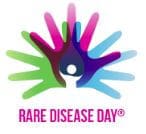 The last day of February each year is designated as Rare Disease Day, a unique opportunity to recognize people who sometimes seem to be forgotten by the mainstream medical community. Once again PacBio is an official sponsor of the day, which will be marked with awareness-raising events in 80 countries around the world. It’s a beautiful way to remember the hundreds of millions of people affected by a rare disease, as well as the caretakers, researchers, and clinicians who work so hard to make their lives better.
The last day of February each year is designated as Rare Disease Day, a unique opportunity to recognize people who sometimes seem to be forgotten by the mainstream medical community. Once again PacBio is an official sponsor of the day, which will be marked with awareness-raising events in 80 countries around the world. It’s a beautiful way to remember the hundreds of millions of people affected by a rare disease, as well as the caretakers, researchers, and clinicians who work so hard to make their lives better.
The thing about rare diseases is that, while each individual disease might affect a vanishingly small fraction of the population, collectively they affect an estimated 350 million people around the world.
That’s a lot of reasons to find new ways to solve rare disease. There are more than 7,000 rare diseases known, with more being discovered all the time. You can get a glimpse of the impact on Twitter today by searching #ShowYourRare, or listen to this podcast from Howard Jacob for an insider’s look at working in this community.
The rare disease community is especially important to us because of our strong belief that SMRT Sequencing will be a powerful tool for resolving so many phenotypes that remain undiagnosed. This was recently validated through the newly funded SOLVE-RD research program, which plans to use long-read sequencing to look for the genetic cause of rare diseases in 500 genomes that remain undiagnosed despite previous analysis with other genomic technologies. Identifying the genetic cause of a rare disease is an important first step toward understanding the disease mechanism – which can ultimately lead to new therapy development and treatment options.
Toward this end, scientists have made great strides in discovering the genetic cause of many rare diseases through advances in sequencing methods, including whole exome sequencing. These methods are now routinely used to look for coding changes in genes, typically caused by SNPs, but there is plenty of evidence to suggest that the next wave of discoveries will come from looking beyond these small coding variants for larger structural variants. These variant types include repeat expansions, deletions, duplications, and insertions – such as mobile elements, and other structural variants (>50 bp in length) – that are frequently missed by short-read sequencers. You can check out our informative short video tutorial on structural variation.
Our users have proven again and again that SMRT Sequencing generates a comprehensive view of all variant types and sizes across the human genome, detecting structural variation that has clear clinical implications. A recent study published this week in Cell provides a nice example of how a non-coding structural variant is causative for a rare Mendelian disorder, X-Linked Dystonia-Parkinsonism. This follows a similar study where a structural variant, in this case a mobile element insertion in the dystrophin gene, was found to be the cause of Becker Muscular Dystrophy in an individual from Portugal. These studies reinforce the need to comprehensively identify structural variants in the human genome to increase the solve-rate for rare disease.
In another study, published in 2017, Euan Ashley’s team at Stanford University described a novel method using low-fold, long-read PacBio sequencing of the whole human genome for an individual with a previously undiagnosed disease. By calling structural variants across the whole genome using low-fold, long-read WGS, Ashley and his team found six novel variants in disease relevant genes. One of those genes was linked to Carney syndrome, which was later validated as the correct diagnosis for the individual. We love this story because it offers a glimpse of how much we might learn about rare disease simply by taking advantage of highly accurate, long-read sequence data.
To see more examples of how SMRT Sequencing users have already made inroads in rare disease research, check out our blog post from Rare Disease Day 2016. And don’t miss out on the opportunity to participate in today’s festivities! Check out these global efforts and US-based initiatives to get involved.
For more information on sequencing structural variants for disease gene discovery, you can check out our upcoming Nature webcast.